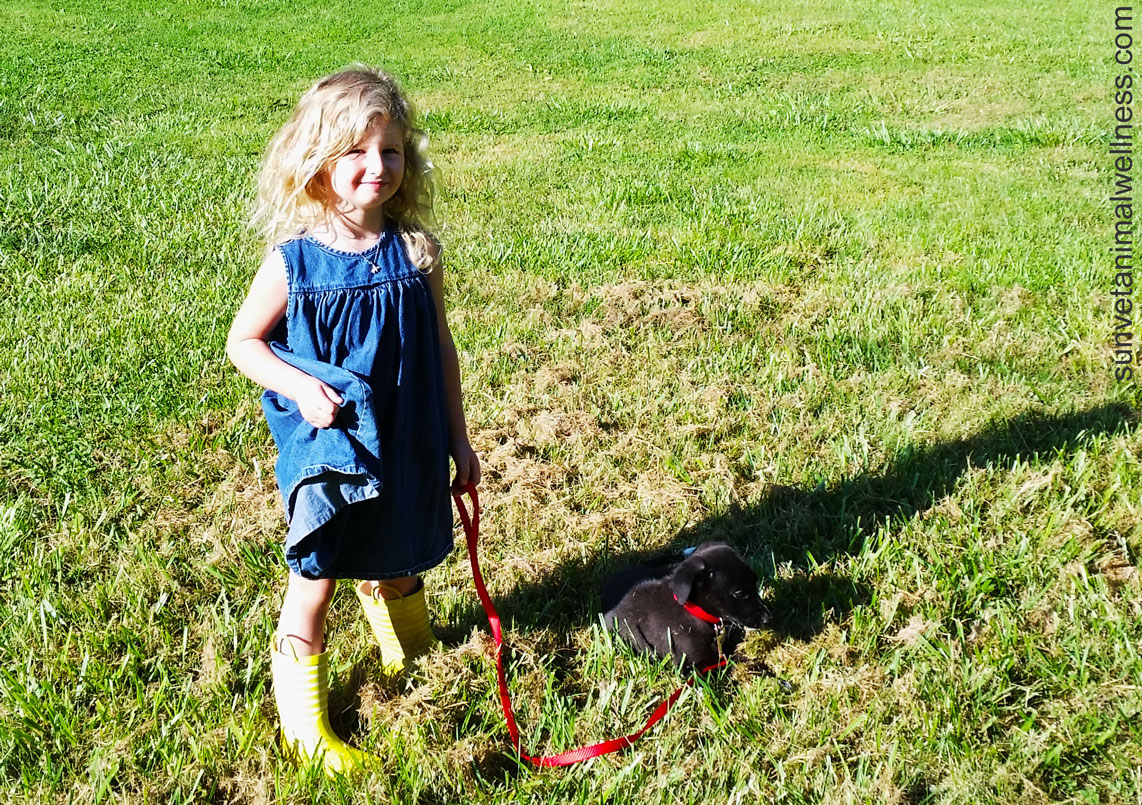We have talked before about how beautiful the relationship between little ones and their four-legged buddies can be. But just as they say all energy moves toward chaos, the relationship between animals and children can escalate into a frenzy, if left unchecked. Safety education is paramount, especially if your child is very young. Do not leave them entirely to their own devices! On the one hand, your kids are still growing, learning, and testing boundaries, along with learning how to verbalize their thoughts and needs. Your four-leggeds can’t verbalize at all (at least not in English!), making it more difficult for them to communicate when they don’t like something, want certain behaviors to stop, or are hurting. It is our role to step in, fill this fundamental gap and help them understand each other.

- Animals and children can have a truly special relationship, with a few sensible precautions.
Training for Everyone!
Training of pups is imperative! Have your youngster be a part of this adventure along with every member of your family. This develops a universal familiarity with the language and gestures you use to communicate with your dog. If everyone uses the same language, ambiguity and confusion is reduced or eliminated.
Of course, your dog is not the only one that need training. Kids need training too! They’re still learning the right ways to behave and understanding the boundaries between “kind and playful” and “rough and hurtful.” Without being taught, youngsters don’t understand that, though they may think pulling on Fido’s ear is funny, in reality he doesn’t like it. Kids also need to learn how to pick up rabbits, gerbils, reptiles or birds correctly or not to tap on a fish tank window. Special attention must be paid to teaching kids that their beautiful, cuddly friends need quiet time too. Setting boundaries related to times of the day or certain areas of the house for relating, so Fluffy can chill out, is essential.
Make sure you set the care responsibilities of a young child at a level that is suitable to her age, personality and attention span. Frustration related to care-taking can lead to resentment and lashing out. The brunt of this frustration may be directed at her four-legged companion, bringing about confusion and lack of trust. Please be there to support your youngster with patience until they feel competent in their task.
Anytime your tot is around dogs or cats, be aware of the movements and signals that are visible. Gently redirect if you feel your child or four-legged is becoming too pushy, or you see inappropriate actions. Never let your child run up to a strange dog or cat. This rushing movement may be interpreted as aggression or an impolite action and could have devastating repercussions.
The special bond and energy that animals and children share is so unique, and enriching to both of their lives. Using some common-sense safety steps can set them both up for success!
Shine on,

